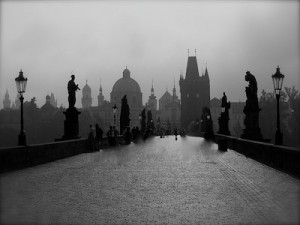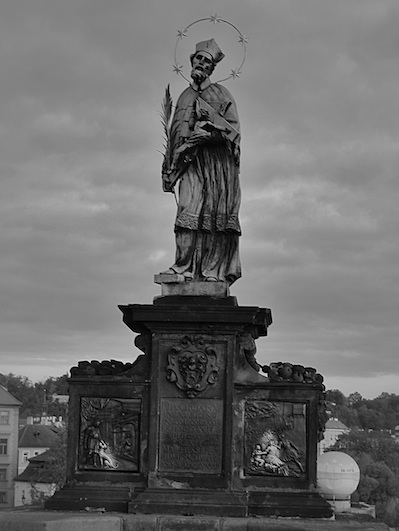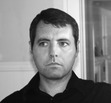The Charles Bridge
In today’s excerpt from Prague Unbound, we take a look at one of the city’s most iconic structures — The Charles Bridge.
 Though universally recognized as one of the most beautiful bridges in the world, from an art historian’s perspective, the Charles Bridge is a aesthetic Frankenstein’s monster pieced together from the bones of various historical eras, the flesh of varied artistic styles, the corrupted organs of conflicting political and religious agendas. Deconstructed by Swedish cannonballs and Vltava floods, reconstructed and renovated multiple times since its beginnings in 1357, the bridge is perhaps best seen as a semiotic pastiche writ in stone, a cipher morphing brick-by-brick through centuries of tumult and…
Though universally recognized as one of the most beautiful bridges in the world, from an art historian’s perspective, the Charles Bridge is a aesthetic Frankenstein’s monster pieced together from the bones of various historical eras, the flesh of varied artistic styles, the corrupted organs of conflicting political and religious agendas. Deconstructed by Swedish cannonballs and Vltava floods, reconstructed and renovated multiple times since its beginnings in 1357, the bridge is perhaps best seen as a semiotic pastiche writ in stone, a cipher morphing brick-by-brick through centuries of tumult and…
Christ Jesus but we’re boring ourselves silly.
To the legends and myths, to the blood and agony and death…
The thirty statues lining the bridge constitute a panoply of suffering likely unrivaled by any 500-meter stretch on earth. Those age-blackened* stone figures looking mournfully on as millions of tourists parade across while locals play accordions and hawk mass-produced watercolors and make puppets dance include:
Saint Barbara, who was imprisoned, tortured and finally beheaded (the last by her own father, no less).
Saint Margaret the Virgin, who was once swallowed by Satan himself before escaping, only to be thrown in a cauldron of boiling water (didn’t kill her), burned alive (didn’t kill her), and beheaded (killed her).
Saint Christopher, decapitated.
Saint Ludmila of Bohemia, strangled by her own veil at the behest of her daughter-in-law.
Saint Lutgardis, who levitated, dripped blood from her forehead, and was stricken blind for the last 11 years of her life.
Saint Adelbert, martyred for chopping down oak trees sacred to Prussian pagans. Decapitated.
Saint Wenceslas I, murdered by his brother, Boleslav the Cruel.
Saint Sigismund, who ordered his own son strangled when the kid insulted Sigismund’s second wife. Sigismund then repented and retired to a monastery, but was later executed, his remains thrown into a well.
Saint Jude the Apostle, who alongside Simon the Zealot, was either crucified or hacked to death. Also he was maybe the brother of Jesus, which must almost certainly have involved some psychological discomfort vis-à-vis sibling rivalry, feelings of inadequacy, etc., but discomfort which would pale in comparison to being hacked to death, we thinks.
Saint Catejan, patron saint of the unemployed and gamblers, died of grief.
Saints Cosman and Damian, beheaded, along with their brothers, Anthimus, Leontius, and Eurepius.
St. Vitus, patron saint of clowns, dogs, actors, and epileptics, tortured first by his father, tortured again in Luciana, then boiled alive.
St. John of Nepomuk, tortured and then drowned in the very river he now overlooks.
St. John of Nepomuk is not the only figure whose death is associated with the bridge, however. After the Battle of White Mountain, the heads of 12 of the 27 nobles executed in Old Town Square were hung in iron cages hoisted on the bridge tower, including that of Charles University rector Johannes Jessenius, whose tongue was ripped out and nailed to his forehead. Picked clean by ravens, the skulls remained displayed as a grim warning for ten years.

*They’re not as old as their blackened exteriors might have you believe. Actually all of the statues are replicas of the originals, which beginning in 1965 have been housed in the National Museum.
(Photo of Charles Bridge via Chosovi, Wikimedia Commons, St. Nepomuk via Paul Holloway)



